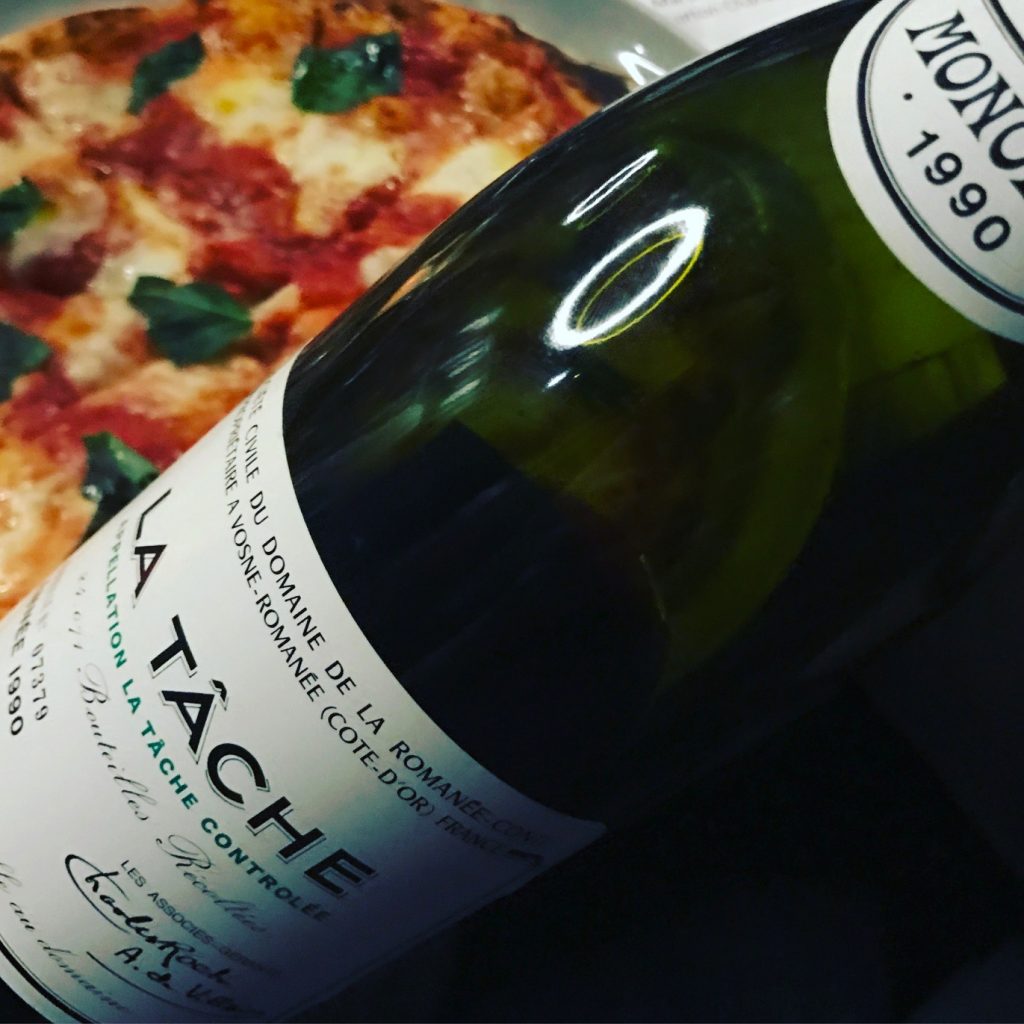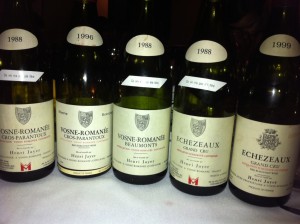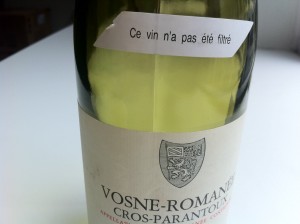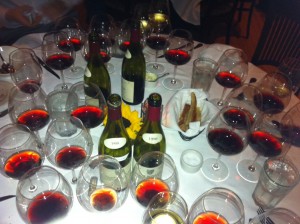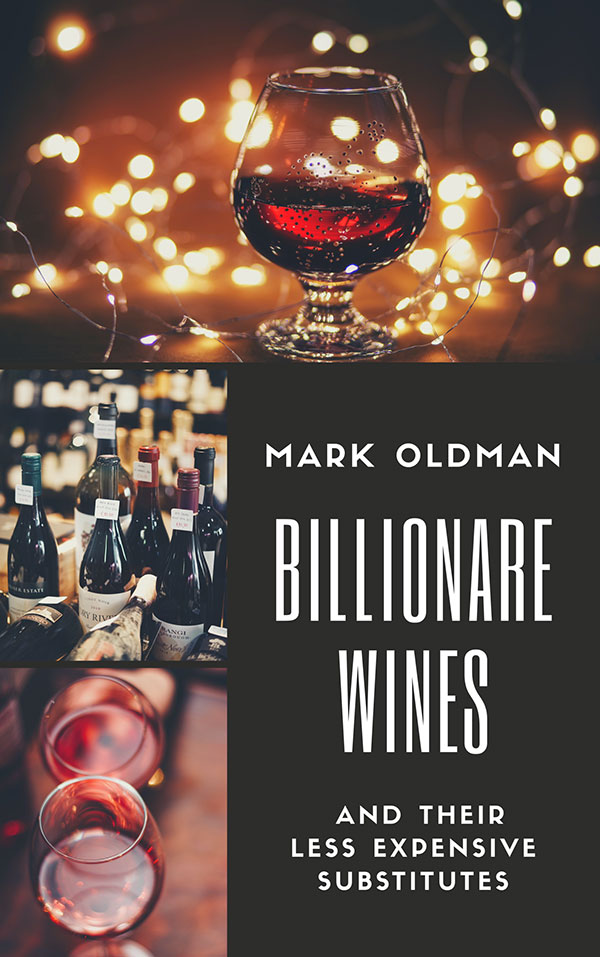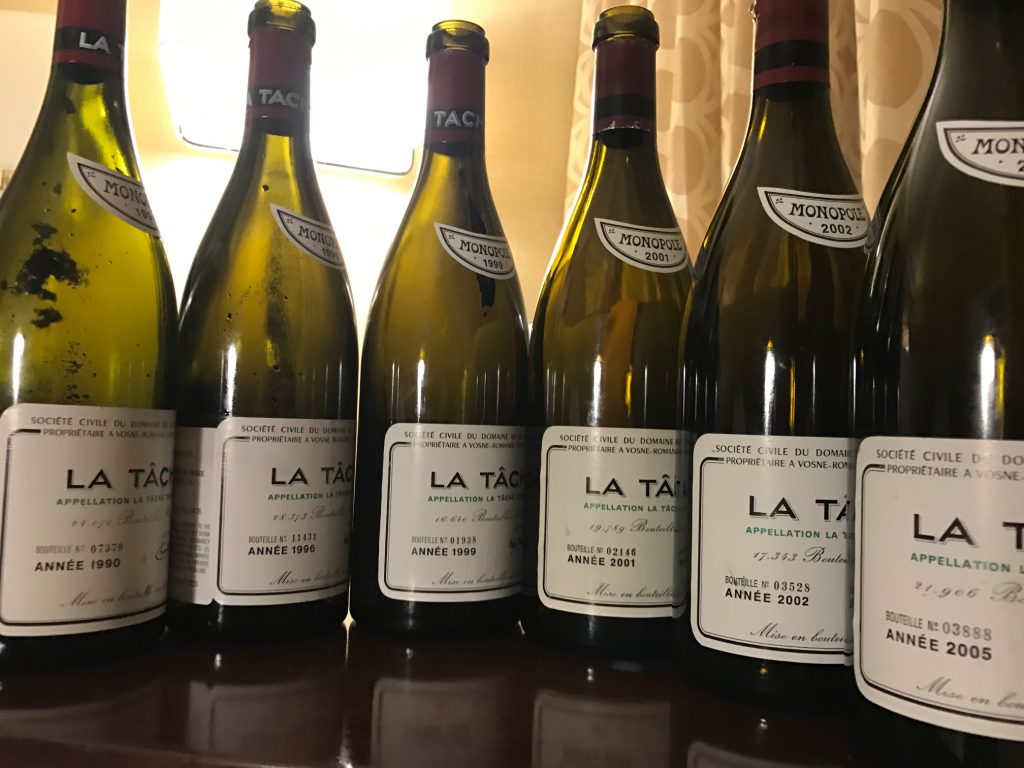
Last week in sunny Palo Alto, it was cloudy with a chance of rain. And rain it did, in the form of Domaine de la Romanée-Conti La Tache, with five vintages of impeccable provenance from a collector whose proclivity to sharing is unmatched. Let’s get to the report (cue 70’s porn music):
1990 La Tache: The nose was a heady mélange of ripe, sweet red fruit permeated with notes of mushrooms, truffles, and La Tache’s unmistakable perfume of Asian spices. The rich-but-not-heavy taste penetrated every pore and lingered forever on the kaleidoscopic finish; you don’t need wine expertise to sense how sexy and astonishingly intense this wine is. Having been fortunate to canoodle with the 1990 several times over the years, I found this to be its best, most expressive showing.
1996 La Tache: If the 1990 was a buxom Burgundy-born pin-up, then the 1996 was Tippi Hedren — elegance and mystery, with a smoldering sex appeal that shows itself only when it decides it is ready. After about a half hour in the glass, it opened up to reveal layers of red fruit, soy sauce, and mint joined by seductive, powdery tannins which coat the tongue like the finest velvet.
1999 La Tache: Although Burgundy specialists regard the 1999 as near “perfect”, this bottle was a bit more reserved than expected and its muscular tannins and tart acidity were a bit too insistent. But the makings are there for future greatness, with its foundation of ripe plum, spice, and that know-it-when-you-smell-it earthiness the French call sous bois (“under brush” or “forest floor”).
2001 La Tache: The great surprise of the night: undeniably gorgeous, with a perfume of rose petals and minerals, with every structural element — acidity, tannin, fruit concentration, and alcohol — in balletic equipoise. The 2001 demonstrates how a top winery can make a masterpiece even in a relatively disappointing vintage year.
2002 La Tache: Started with an odd, flowers-and-cedar scent and sharp acidity, a woody dissonance that suggested spoilage. It was even more disjointed after an hour. Oxidized bottle.
2005 La Tache: A rare specimen of beauty, its dense black fruit showing hints of exotic spice coupled with a pleasing whiff of earth and beef bouillon. Its finish lingers like long, high clouds across a summer sky. But it is still young and tightly wound, with noticeable tannins. All signs point to a legend in the making that will get more nuanced and silky in the years and decades to come.
